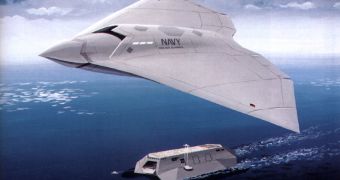More and more, scientists, militarists, and governments are investing large amounts of resources in an intriguing, futuristic technology - fleets of small unmanned aerial vehicles (UAVs).
The main reason for investing in UAV technology lies in the replacement of the traditional, open battleground with the urban theater of war.
Urban environments - with their mazes of tall buildings, parked cars, residences, alleys and tunnels - create a three-dimensional challenge for invading troops unfamiliar with the city. UAVs, however, armed with imaging technology, signals and sensors, could provide surveillance and reconnaissance operations for soldiers, so they won't have to.
In fact, UAVs are not all that new, although interest in these small fliers has spiked recently due to current world circumstances and to the emergence of (by now several) small, often portable, relatively low-cost vehicles.
"One aspect of UAV technology of particular interest to us is autonomy: how can UAVs successfully operate with minimal human oversight," said Tariq Samad, expert in the field of unmanned aerial probes. "Limitations include the fact that obstacle and collision avoidance require the human operator's engagement. Advances in control algorithms, sensing, and communications are being pursued that should address these and other outstanding challenges. We should remember that our warfighters in the midst of urban operations cannot be expected to devote their attention to low-level aspects of controlling and managing UAVs. Minimizing the associated cognitive and physical workload of urban warfighters through increasingly autonomous UAVs and UAV-based systems is essential for the potential benefits of UAV technology to be realized."
There are many applications for the UAVs in today's battlefields and their success could mean the further expansion of this research field.
They could be filling in the gaps in GPS or cellular infrastructure in the limited line-of-sight regions common in urban areas, as a fleet of UAVs equipped with radio or cell technology could sense and follow a unit moving through a city, providing uninterrupted communication service.
They can provide live video coverage, close-up views, and the tracking of moving objects, enemy or friendly.
They have also been used in search and rescue operations in the aftermath of hurricane Katrina, where human access was extremely difficult, if not impossible.
There are, of course, limitations like the autonomy hours, but recently, a few types of UAVs have proven effective in Iraq and Afghanistan, providing troops with timely surveillance and reconnaissance.
Due to their relatively inexpensive fabrication and testing, along with the variety of applications, UAVs seem prone to playing a significant role in the future of war.

 14 DAY TRIAL //
14 DAY TRIAL //